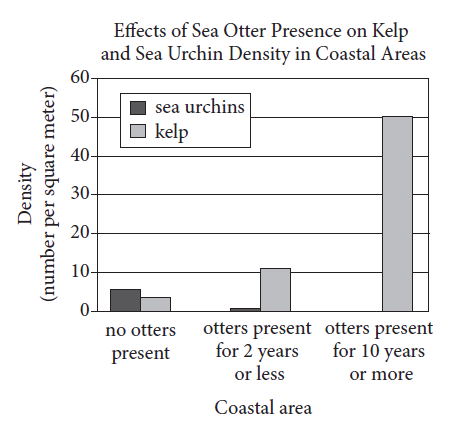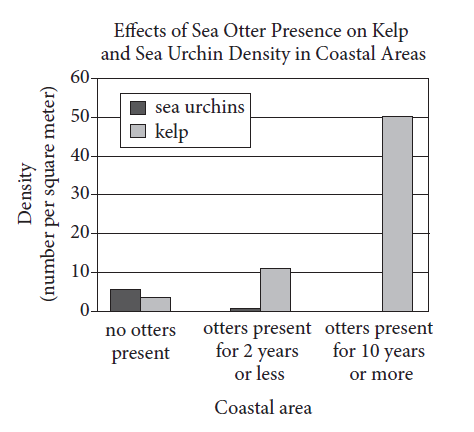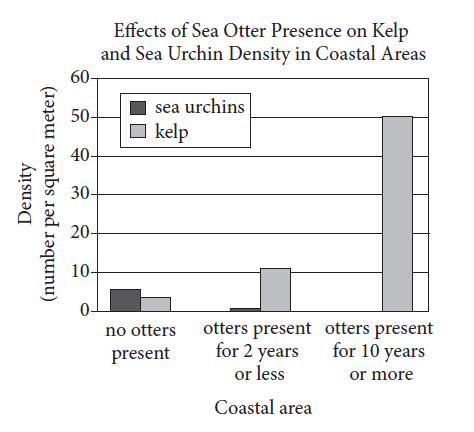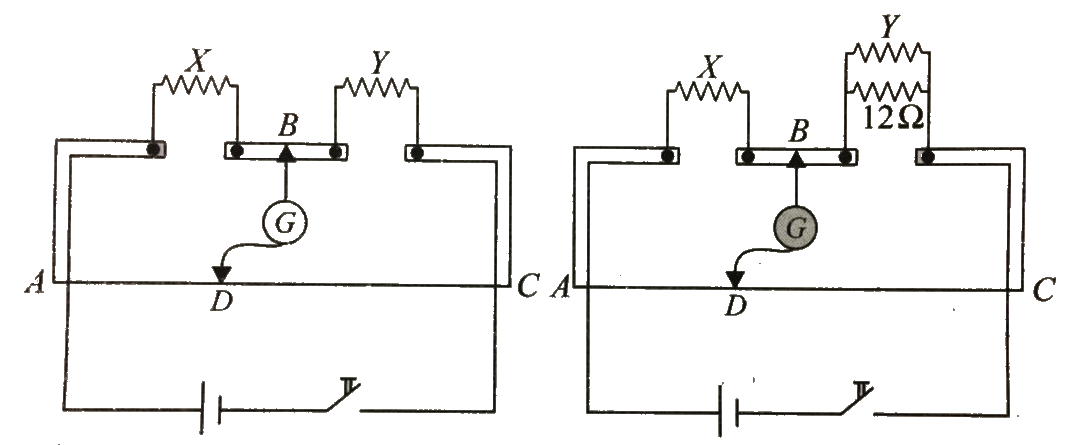Despite high level of heterozygosity, the progeny derived from a seed of cross pollinated plant was found to be completely uniform. One reason can be
Induced mutation
Polyploidy
Apomixis
Parthenocarpy.
The correct Answer is:C
To solve the question regarding why the progeny derived from a seed of a cross-pollinated plant was found to be completely uniform despite high levels of heterozygosity, we can follow these steps:
1. Understanding Cross-Pollination:
- Cross-pollination typically leads to genetic variation in the progeny because it involves the fusion of gametes from different parent plants, resulting in offspring that may exhibit a range of traits.
Hint: Consider what cross-pollination usually results in regarding genetic diversity.
2. Identifying the Anomaly:
- In this case, the progeny is described as completely uniform, which is unusual for cross-pollinated plants. This suggests that despite the genetic potential for variation, the progeny does not exhibit any.
Hint: Think about what could cause uniformity in progeny despite genetic diversity.
3. Exploring Possible Explanations:
- Several reproductive processes could explain this uniformity:
- Apomixis: A form of asexual reproduction where seeds are produced without fertilization, leading to progeny that are genetically identical to the parent.
- Induced Mutation: This would typically introduce variation, not uniformity.
- Polyploidy: This condition may lead to variations due to extra chromosome sets.
- Parthenocarpy: This refers to fruit development without fertilization, which does not directly relate to seed uniformity.
Hint: Focus on the reproductive processes that can lead to seed formation without the fusion of gametes.
4. Conclusion:
- The only process that can lead to completely uniform progeny from a cross-pollinated plant is apomixis. In apomixis, seeds develop from the ovule without fertilization, resulting in offspring that are clones of the parent plant.
Hint: Recall the definition and characteristics of apomixis and how it differs from other reproductive methods.
Final Answer:
The correct reason for the complete uniformity of the progeny derived from a seed of a cross-pollinated plant is apomixis.
- Cross-pollination typically leads to genetic variation in the progeny because it involves the fusion of gametes from different parent plants, resulting in offspring that may exhibit a range of traits.
- In this case, the progeny is described as completely uniform, which is unusual for cross-pollinated plants. This suggests that despite the genetic potential for variation, the progeny does not exhibit any.
- Several reproductive processes could explain this uniformity:
- Apomixis: A form of asexual reproduction where seeds are produced without fertilization, leading to progeny that are genetically identical to the parent.
- Induced Mutation: This would typically introduce variation, not uniformity.
- Polyploidy: This condition may lead to variations due to extra chromosome sets.
- Parthenocarpy: This refers to fruit development without fertilization, which does not directly relate to seed uniformity.
- The only process that can lead to completely uniform progeny from a cross-pollinated plant is apomixis. In apomixis, seeds develop from the ovule without fertilization, resulting in offspring that are clones of the parent plant.
The correct reason for the complete uniformity of the progeny derived from a seed of a cross-pollinated plant is apomixis.
Topper's Solved these Questions
- NO IDEABOOK - DINESH PUBLICATION ENGLISHCHAPTER - NO IDEAEXERCISE - Check Your Grasp
32 Videos
- NO IDEABOOK - DINESH PUBLICATION ENGLISHCHAPTER - NO IDEAEXERCISE - Brain Teasers
37 Videos
- MOLLUSCABOOK - DINESH PUBLICATION ENGLISHCHAPTER - MOLLUSCAEXERCISE - CYG
10 Videos
- ORGANISMS AND THE ENVIRONMENTBOOK - DINESH PUBLICATION ENGLISHCHAPTER - ORGANISMS AND THE ENVIRONMENTEXERCISE - CYG
17 Videos
Similar Questions
A pure homozygous pea plant with yellow round seeds is crossed with a pure homozygous pea plant with green wrinkled seeds. Their progeny produced is allowed to undergo self - pollination. It produces four different phenotypes . Each phenotype is an expression of different types of genotypes. Select the correct option from the table.

View Solution(a) Explain a monohybrid cross taking seed coat colour as a trait 1n Pisum sativum. Work out the cross upto F generation.
(b) State the laws of inheritance that can be derived from such a cross.
(c) How is the phenotypic ratio of F2 generation different in a dihybrid cross?
View Solution
Knowledge Check
Environmentalist Otters
It has long been known that the sea otters (23) living along the West Coast of North America help––––––––––––––––––––––––––––––––––––––––––––––––––––––– keep kelp forests in their habitat healthy and vital. They do this by feeding on sea urchins and other herbivorous invertebrates that graze voraciously on kelp. With sea otters to keep the population of sea urchins in check, kelp forests can flourish. In fact, (24) two years or less of sea otters can completely eliminate sea urchins––––––––––––––––––––––––––––––––––––––––––––––––––––––––––––––––––––––– in a coastal area (see chart).

Adapted from David O. Duggins, “Kelp Beds and Sea Otters: An Experimental Approach.” ©1980 by the Ecological Society of America.
Without sea otters present, (25) nevertheless–––––––––––––, kelp forests run the danger of becoming barren stretches of coastal wasteland known as urchin barrens.
[1] What was less well-known, until recently at least, was how this relationship among sea otters, sea urchins, and kelp forests might help fight global warming. [2] The amount of carbon dioxide in the atmosphere has increased 40 percent (26) . [3] A recent study by two professors at the University of California, Santa Cruz, Chris Wilmers and James Estes, (27) suggests, that––––––––––––––– kelp forests protected by sea otters can absorb as much as twelve times the amount of carbon dioxide from the atmosphere as those where sea urchins are allowed to (28) devour–––––––– the kelp. [4] Like (29) their––––– terrestrial plant cousins, kelp removes carbon dioxide from the atmosphere, turning it into sugar fuel through photosynthesis, and releases oxygen back into the air.
[5] Scientists knew this but did not recognize (30) how large a role they played–––––––––––––––––––––––––––––– in helping kelp forests to significantly decrease the amount of carbon dioxide in the atmosphere. [6] Far from making no difference to the ecosystem, the presence of otters was found to increase the carbon storage of kelp forests by 4.4 to 8.7 megatons annually, offsetting the amount of carbon dioxide emitted by three million to six million passenger cars each year. (31)
Wilmers and Estes caution, however, that (32) having more otters––––––––––––––––––––– will not automatically solve the problem of higher levels of carbon dioxide in the air. But they suggest that the presence of otters provides a good model of how carbon can be sequestered, (33) or removed, from––––––––––––––––––– the atmosphere through the management of animal populations. If ecologists can better understand what kinds of impacts animals might have on the environment, Wilmers contends, “there might be opportunities for win-win conservation scenarios, whereby animal species are protected or enhanced, and carbon gets sequestered.”ANO CHANGEBliving along the West Coast of North America, they helpCthat live along the West Coast of North America and help toDthat live along the West Coast of North America, where they helpEnvironmentalist Otters
It has long been known that the sea otters (23) living along the West Coast of North America help––––––––––––––––––––––––––––––––––––––––––––––––––––––– keep kelp forests in their habitat healthy and vital. They do this by feeding on sea urchins and other herbivorous invertebrates that graze voraciously on kelp. With sea otters to keep the population of sea urchins in check, kelp forests can flourish. In fact, (24) two years or less of sea otters can completely eliminate sea urchins––––––––––––––––––––––––––––––––––––––––––––––––––––––––––––––––––––––– in a coastal area (see chart).

Adapted from David O. Duggins, “Kelp Beds and Sea Otters: An Experimental Approach.” ©1980 by the Ecological Society of America.
Without sea otters present, (25) nevertheless–––––––––––––, kelp forests run the danger of becoming barren stretches of coastal wasteland known as urchin barrens.
[1] What was less well-known, until recently at least, was how this relationship among sea otters, sea urchins, and kelp forests might help fight global warming. [2] The amount of carbon dioxide in the atmosphere has increased 40 percent (26) . [3] A recent study by two professors at the University of California, Santa Cruz, Chris Wilmers and James Estes, (27) suggests, that––––––––––––––– kelp forests protected by sea otters can absorb as much as twelve times the amount of carbon dioxide from the atmosphere as those where sea urchins are allowed to (28) devour–––––––– the kelp. [4] Like (29) their––––– terrestrial plant cousins, kelp removes carbon dioxide from the atmosphere, turning it into sugar fuel through photosynthesis, and releases oxygen back into the air.
[5] Scientists knew this but did not recognize (30) how large a role they played–––––––––––––––––––––––––––––– in helping kelp forests to significantly decrease the amount of carbon dioxide in the atmosphere. [6] Far from making no difference to the ecosystem, the presence of otters was found to increase the carbon storage of kelp forests by 4.4 to 8.7 megatons annually, offsetting the amount of carbon dioxide emitted by three million to six million passenger cars each year. (31)
Wilmers and Estes caution, however, that (32) having more otters––––––––––––––––––––– will not automatically solve the problem of higher levels of carbon dioxide in the air. But they suggest that the presence of otters provides a good model of how carbon can be sequestered, (33) or removed, from––––––––––––––––––– the atmosphere through the management of animal populations. If ecologists can better understand what kinds of impacts animals might have on the environment, Wilmers contends, “there might be opportunities for win-win conservation scenarios, whereby animal species are protected or enhanced, and carbon gets sequestered.”ANO CHANGEBthey’reCitsDit’sEnvironmentalist Otters
It has long been known that the sea otters (23) living along the West Coast of North America help––––––––––––––––––––––––––––––––––––––––––––––––––––––– keep kelp forests in their habitat healthy and vital. They do this by feeding on sea urchins and other herbivorous invertebrates that graze voraciously on kelp. With sea otters to keep the population of sea urchins in check, kelp forests can flourish. In fact, (24) two years or less of sea otters can completely eliminate sea urchins––––––––––––––––––––––––––––––––––––––––––––––––––––––––––––––––––––––– in a coastal area (see chart).

Adapted from David O. Duggins, “Kelp Beds and Sea Otters: An Experimental Approach.” ©1980 by the Ecological Society of America.
Without sea otters present, (25) nevertheless–––––––––––––, kelp forests run the danger of becoming barren stretches of coastal wasteland known as urchin barrens.
[1] What was less well-known, until recently at least, was how this relationship among sea otters, sea urchins, and kelp forests might help fight global warming. [2] The amount of carbon dioxide in the atmosphere has increased 40 percent (26) . [3] A recent study by two professors at the University of California, Santa Cruz, Chris Wilmers and James Estes, (27) suggests, that––––––––––––––– kelp forests protected by sea otters can absorb as much as twelve times the amount of carbon dioxide from the atmosphere as those where sea urchins are allowed to (28) devour–––––––– the kelp. [4] Like (29) their––––– terrestrial plant cousins, kelp removes carbon dioxide from the atmosphere, turning it into sugar fuel through photosynthesis, and releases oxygen back into the air.
[5] Scientists knew this but did not recognize (30) how large a role they played–––––––––––––––––––––––––––––– in helping kelp forests to significantly decrease the amount of carbon dioxide in the atmosphere. [6] Far from making no difference to the ecosystem, the presence of otters was found to increase the carbon storage of kelp forests by 4.4 to 8.7 megatons annually, offsetting the amount of carbon dioxide emitted by three million to six million passenger cars each year. (31)
Wilmers and Estes caution, however, that (32) having more otters––––––––––––––––––––– will not automatically solve the problem of higher levels of carbon dioxide in the air. But they suggest that the presence of otters provides a good model of how carbon can be sequestered, (33) or removed, from––––––––––––––––––– the atmosphere through the management of animal populations. If ecologists can better understand what kinds of impacts animals might have on the environment, Wilmers contends, “there might be opportunities for win-win conservation scenarios, whereby animal species are protected or enhanced, and carbon gets sequestered.”
Where is the most logical place in this paragraph to add the following sentence?
What Wilmers and Estes discovered in their study, therefore, surprised them.AAfter sentence 1BAfter sentence 3CAfter sentence 4DAfter sentence 5
Consider the following statement (a-d) each with one or two blanks
(a) Brears go into (1) ______during winter to (2)_____cold weather
(b) A conical age pyramid with a broad base represents (3)_____human population.
© A wasp pollinating a fig flower is an example of (4)_____
(d) an area with high levels of species richness is known as (5)_____
which one of the following options, gives the correct fill ups for the respective blank numbers from (1) to (5) in the statements:-
View Solution(a) As a senior biology student you have been asked to demonstrate to the students of secondary level in your school, the procedure(s) that shall ensure cross-pollination in a hermaphrodite flower. List the different steps that you would suggest and provide reasons for each one of them.
(b )Draw a diagram of a section of a megasporangium of and angiosperm and label funiculus, micropyle, embryosac and nucellus.
View Solution(a) As a senior biology student you have been asked to demonstrate to the students of secondary level in your school, the procedure(s) that shall ensure cross-pollination in a hermaphrodite flower. List the different steps that you would suggest and provide reasons for each one of them.
(b )Draw a diagram of a section of a megasporangium of and angiosperm and label funiculus, micropyle, embryosac and nucellus.
View SolutionFigure 6.32 shows a meter bridge in the (which is nothing but a particle wheastone bridge), consisting of two resistors X and Y together in parellel with a meter long constantan wire of uniform cross section.

with the help of a movable contact d, one can change the ratio of resistance of the two segments of the wire until a sensitive galvanometer G connected across b and D shows no deflection. The null point is found to be at a distance of 33.7cm. The resistor Y is shunted by a resistance of 12Ω, and the null point is found to shift by a distance of 18.2cm. Determine the resistance of X and Y.
View SolutionEnvironmentalist Otters
It has long been known that the sea otters (23) living along the West Coast of North America help––––––––––––––––––––––––––––––––––––––––––––––––––––––– keep kelp forests in their habitat healthy and vital. They do this by feeding on sea urchins and other herbivorous invertebrates that graze voraciously on kelp. With sea otters to keep the population of sea urchins in check, kelp forests can flourish. In fact, (24) two years or less of sea otters can completely eliminate sea urchins––––––––––––––––––––––––––––––––––––––––––––––––––––––––––––––––––––––– in a coastal area (see chart).

Adapted from David O. Duggins, “Kelp Beds and Sea Otters: An Experimental Approach.” ©1980 by the Ecological Society of America.
Without sea otters present, (25) nevertheless–––––––––––––, kelp forests run the danger of becoming barren stretches of coastal wasteland known as urchin barrens.
[1] What was less well-known, until recently at least, was how this relationship among sea otters, sea urchins, and kelp forests might help fight global warming. [2] The amount of carbon dioxide in the atmosphere has increased 40 percent (26) . [3] A recent study by two professors at the University of California, Santa Cruz, Chris Wilmers and James Estes, (27) suggests, that––––––––––––––– kelp forests protected by sea otters can absorb as much as twelve times the amount of carbon dioxide from the atmosphere as those where sea urchins are allowed to (28) devour–––––––– the kelp. [4] Like (29) their––––– terrestrial plant cousins, kelp removes carbon dioxide from the atmosphere, turning it into sugar fuel through photosynthesis, and releases oxygen back into the air.
[5] Scientists knew this but did not recognize (30) how large a role they played–––––––––––––––––––––––––––––– in helping kelp forests to significantly decrease the amount of carbon dioxide in the atmosphere. [6] Far from making no difference to the ecosystem, the presence of otters was found to increase the carbon storage of kelp forests by 4.4 to 8.7 megatons annually, offsetting the amount of carbon dioxide emitted by three million to six million passenger cars each year. (31)
Wilmers and Estes caution, however, that (32) having more otters––––––––––––––––––––– will not automatically solve the problem of higher levels of carbon dioxide in the air. But they suggest that the presence of otters provides a good model of how carbon can be sequestered, (33) or removed, from––––––––––––––––––– the atmosphere through the management of animal populations. If ecologists can better understand what kinds of impacts animals might have on the environment, Wilmers contends, “there might be opportunities for win-win conservation scenarios, whereby animal species are protected or enhanced, and carbon gets sequestered.”
Which choice offers an accurate interpretation of the data in the chart?
View Solution
